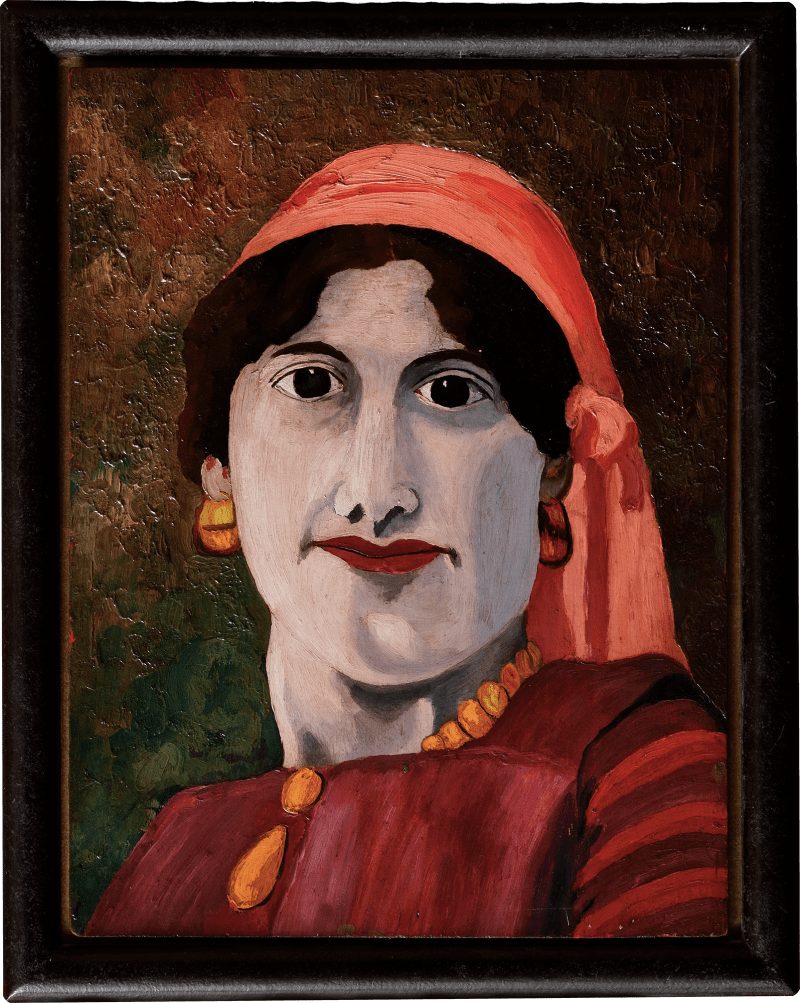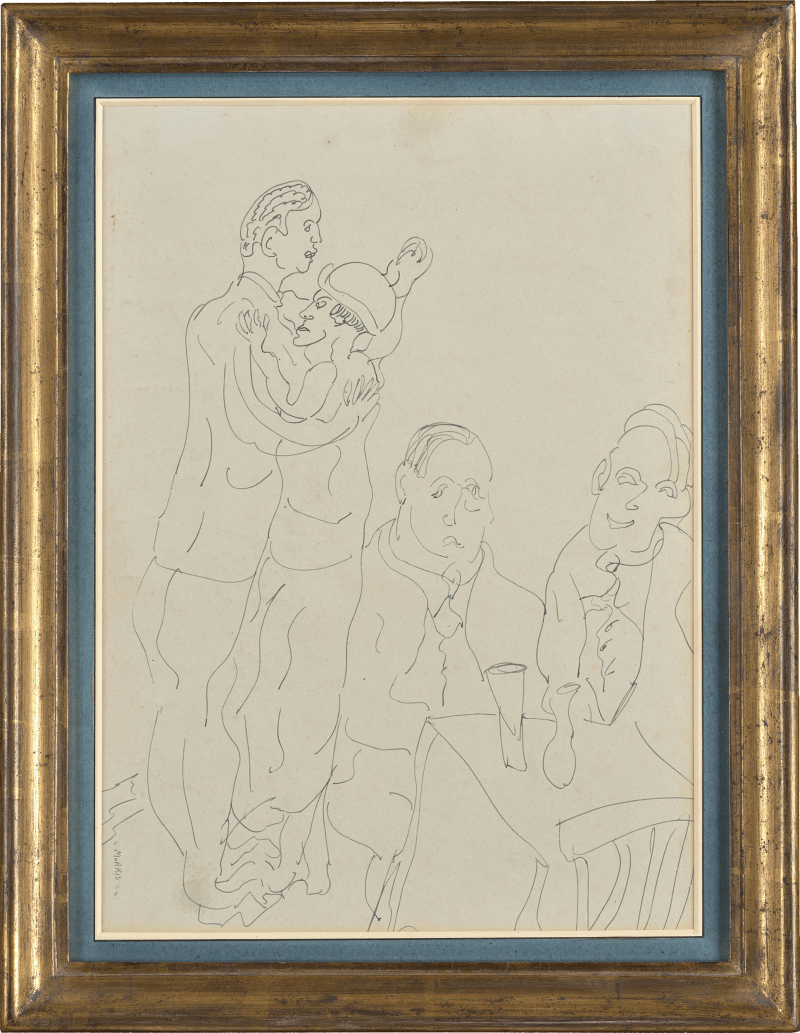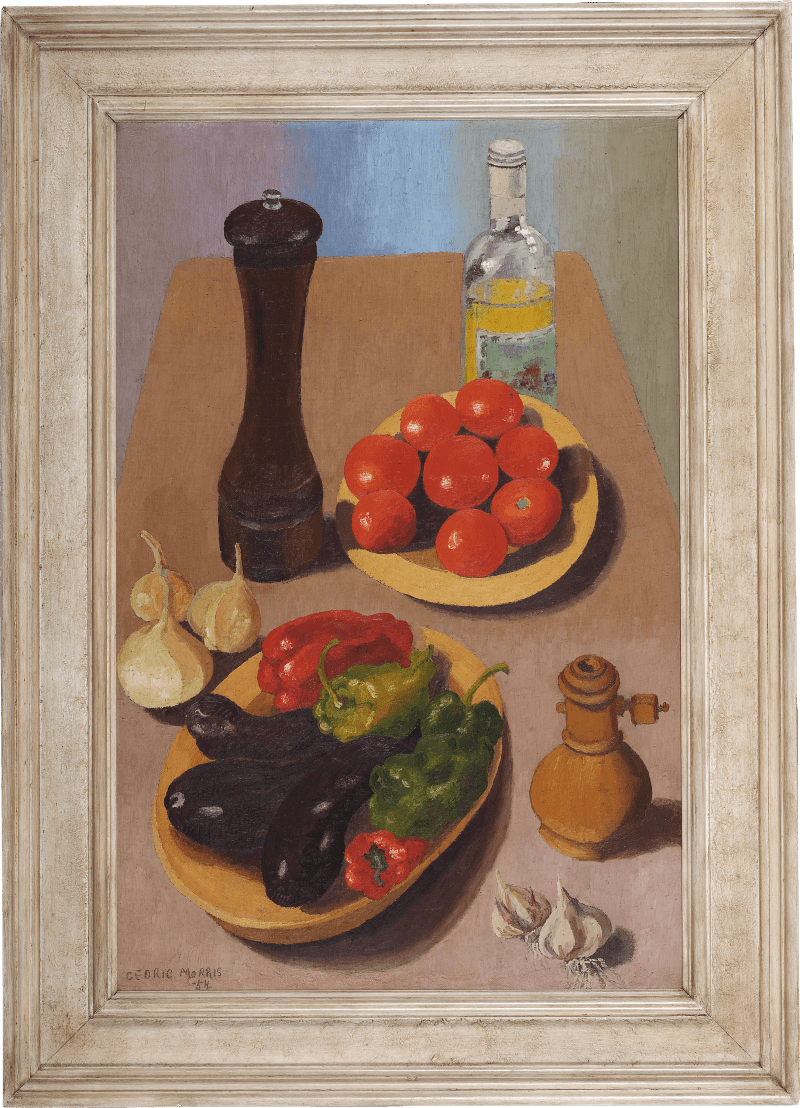Enquire
Previous

Cedric Morris
(1889-1982) Early Spring Plants1946
Oil on canvas
23 5/8 x 19 3/4 in. (60 x 50 cm)
Provenance
Mary Cookson and thence by descent
Anderson and Garland, Newcastle, 23 January 2020.
Anderson and Garland, Newcastle, 23 January 2020.
Exhibitions
Upper Grosvenor Galleries, London, Cedric Morris Painting 14th April - 12th May 1970.
Sold
Prior to the War, Cedric Morris had been gaining prominence within the gardening world as a breeder of irises and a collector of exotic plants; reflected in this work is his appreciation and knowledge of an impressive anthology of plants.
Here, a central blue vase holds a writhing bunch of corkscrew hazel (corylus avellane) cascading with pendent yellow catkins. These catkins develop during the late winter and early spring, so it is possible that Morris painted this composition at some point between January and March of 1946. The deep green ivory on the left of the vase and the green and brown leaves to the right, which are likely to be Magnolia leaves, are both evergreen varieties and further suggests that this painting was executed during the early months of 1946. Indeed, horticulturist and friend Beth Chatto remembers her first encounters with Morris and his paintings and their seasonal nature; ‘Not till after his death did I realise Cedric's...
Here, a central blue vase holds a writhing bunch of corkscrew hazel (corylus avellane) cascading with pendent yellow catkins. These catkins develop during the late winter and early spring, so it is possible that Morris painted this composition at some point between January and March of 1946. The deep green ivory on the left of the vase and the green and brown leaves to the right, which are likely to be Magnolia leaves, are both evergreen varieties and further suggests that this painting was executed during the early months of 1946. Indeed, horticulturist and friend Beth Chatto remembers her first encounters with Morris and his paintings and their seasonal nature; ‘Not till after his death did I realise Cedric's...
| Prior to the War, Cedric Morris had been gaining prominence within the gardening world as a breeder of irises and a collector of exotic plants; reflected in this work is his appreciation and knowledge of an impressive anthology of plants. Here, a central blue vase holds a writhing bunch of corkscrew hazel (corylus avellane) cascading with pendent yellow catkins. These catkins develop during the late winter and early spring, so it is possible that Morris painted this composition at some point between January and March of 1946. The deep green ivory on the left of the vase and the green and brown leaves to the right, which are likely to be Magnolia leaves, are both evergreen varieties and further suggests that this painting was executed during the early months of 1946. Indeed, horticulturist and friend Beth Chatto remembers her first encounters with Morris and his paintings and their seasonal nature; ‘Not till after his death did I realise Cedric's garden was an extension of his palette. It was not a planned painting but a collection of colours, shapes and textures emerging and fading with the seasons.’[1] Whilst many of Morris’ paintings celebrate the striking colours which occur at height of spring and summer blooms, here Morris accepts the natural timeline of burgeoning blooms, and here celebrates the more restful and subdued winters. Morris consistently worked from species of plants and flowers that he greatly admired and in almost all instances those which he propagated himself at the Pound and later Benton End. His keen and scientific understanding of plants informed his approach when he came to paint them. This imbues his painting with a sense of heightened character and individuality particularly when discerning the formal and tonal differences between flowers. In a quintessentially Morris manner, this work is painted in bold and saturated colours; Morris fuses a deep understanding of his subject with a fascination for colour and texture. Although the natural world around him, at this time of year, would have been governed by deep greens and browns, Morris nonetheless introduces colour into his composition through the bright blues of the vase in the foreground and draped curtains in the background. As well as accurately capturing the forms of his subject, Morris reveals his unique ability to bestow on each flower a hint of personality and character that defines his position as one of the greatest natural painters of the twentieth century. [1] B. Chatto., ‘A sage in Suffolk’, The Guardian, 2001. Available at Guardian |









